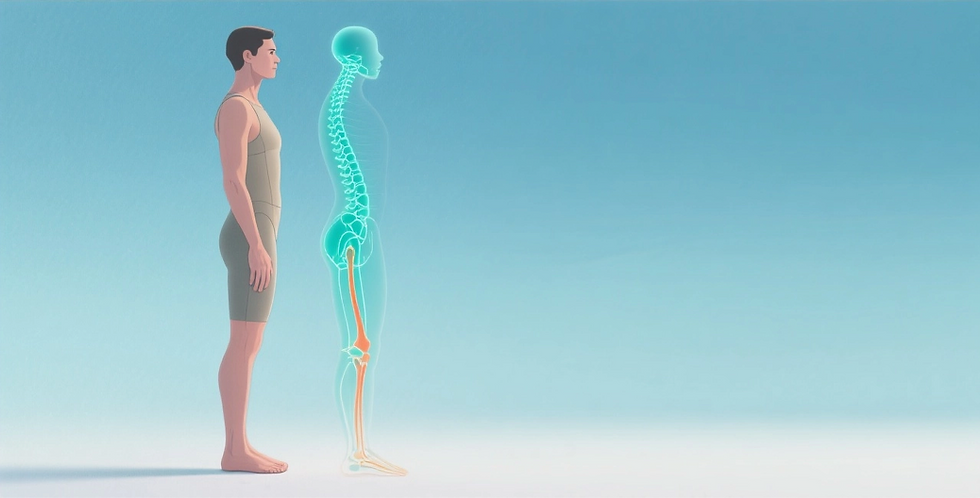Debunking Diet: The Complete Guide to Reclaiming Balance with Whole Foods
- Luc

- Feb 7
- 4 min read
Updated: Feb 18

In our journey to understand healthy eating and break free from diet culture, we first need to recognize the emotional traps that keep us stuck in unhealthy patterns. Debunking diet myths is essential to move from guilt and restriction to balance and nourishment. Let’s explore how to reclaim your relationship with food and embrace a whole-foods approach.
Part 1: Understanding the Emotional Game
[Previously published: "The Guilt Trap: How Diet Culture Turns Healthy Eating into a Mental Game"]
When we focus on eating healthy, whole foods, it's easy to fall into the trap of perfectionism. The moment we indulge in something like a cookie or a slice of cake, we feel guilt or shame, as if we've failed. But this guilt isn't natural—it's a product of diet culture and the unrealistic expectations it creates. Debunking diet culture starts with recognizing these emotional triggers.
The Science of Cravings and Emotional Eating
Processed foods are designed to manipulate our emotions and cravings through:
Hyper-palatable combinations of sugar, fat, and salt
Dopamine-triggering ingredients that create addiction-like patterns
Marketing tactics that play on our emotional vulnerabilities
This creates a cycle that looks like this:
Set healthy eating goals
Experience an indulgence
Feel guilt and shame
Turn to emotional eating
Repeat the cycle
Part 2: Breaking Free and Finding Balance
Now that we understand the emotional traps, let’s explore how to break free and create a sustainable, balanced approach to eating. Debunking diet myths means shifting your mindset from restriction to nourishment.
The Truth About "Diets" vs. Nourishment
What we often label as a "diet" should actually be viewed as nourishment. Here's how to shift your perspective:

Focus on Addition, Not Restriction
Instead of thinking about what to eliminate, focus on adding nutrient-rich foods.
Celebrate the variety of whole foods available to you.
Think in terms of nourishment rather than limitation.
Understanding Whole Foods
Fresh fruits and vegetables
Whole grains
Lean proteins
Healthy fats
Natural, unprocessed ingredients
Creating Sustainable Balance
Include all food groups.
Allow for occasional treats without guilt.
Listen to your body's hunger and fullness cues.
Practice mindful eating.
Practical Steps for Implementation
Start with Small Changes
Add one serving of vegetables to each meal.
Replace one processed snack with a whole-food alternative.
Drink water before reaching for snacks.
Practice Mindful Eating
Eat without distractions.
Chew slowly and savor each bite.
Pay attention to hunger and fullness cues.
Notice how different foods make you feel.
Create a Supportive Environment
Stock your kitchen with whole foods.
Prepare meals in advance when possible.
Have healthy snacks readily available.
Remove trigger foods if necessary.
The Holistic Approach to Health
True health is about more than just food. It encompasses:
Physical well-being
Mental health
Emotional balance
Spiritual connection
Social relationships
Tips for Long-term Success
Plan Without Rigidity
Create flexible meal plans.
Keep healthy options available.
Allow for spontaneity and social occasions.
Address Emotional Needs
Develop non-food coping mechanisms.
Practice stress management.
Seek support when needed.
Engage in regular self-care.
Build Sustainable Habits
Focus on progress, not perfection.
Celebrate small victories.
Learn from setbacks without judgment.
Keep a food and mood journal if helpful.
Conclusion: Your Journey to Food Freedom
Breaking free from diet culture and finding true balance is a journey, not a destination. By debunking diet myths, recognizing how processed foods manipulate our choices, and embracing a whole-foods approach to nourishment, we can create a healthy, sustainable relationship with food.
Remember:
Food is not your enemy.
Perfection is not the goal.
Balance and nourishment are key.
Your worth is not determined by what you eat.
Ready to start your journey toward food freedom and balanced living? Begin by implementing one small change today, and build from there. Remember, every step forward, no matter how small, is progress toward a healthier, happier you.
Schedule a Healing & Growth Discovery Call today!
Science & Hyper-palatable Foods
National Library of Medicine (PubMed)
Article: "Hyper-palatable foods: Development of a quantitative definition and application to the US food system database"
This study defines hyper-palatable foods and their impact on eating behaviors.
Harvard T.H. Chan School of Public Health
Article: "The Role of Processed Foods in the Obesity Epidemic"
Discusses how processed foods, including hyper-palatable ones, contribute to overeating.
Dopamine-Triggering Ingredients
National Institute on Drug Abuse (NIDA)
Article: "The Science of Addiction: How Dopamine Affects the Brain"
Link: https://nida.nih.gov/
Explains how dopamine is triggered by certain substances, including food.
Scientific American
Article: "How Sugar and Fat Trick the Brain into Wanting More Food"
Explores how sugar and fat stimulate dopamine release, creating addiction-like patterns.
Yale Food Addiction Scale (YFAS)
Article: "Food Addiction and Dopamine: The Role of Highly Palatable Foods"
Discusses the link between dopamine and food addiction.
General Resources on Diet Culture and Emotional Eating
American Psychological Association (APA)
Article: "The Psychology of Eating: Emotional Triggers and Food Choices"
Link: https://www.apa.org/
Explains the emotional triggers behind eating behaviors.
Healthline
Article: "What Is Diet Culture? How It Impacts Your Health and How to Break Free"
Provides an overview of diet culture and its effects on mental health.
Disclaimer
This blog is for informational purposes only and is not intended as medical advice. It is meant to complement other health and wellness methods, not replace professional medical care. By implementing the suggestions in this blog, you acknowledge that you are doing so voluntarily and take full responsibility for your health and well-being.





Comments